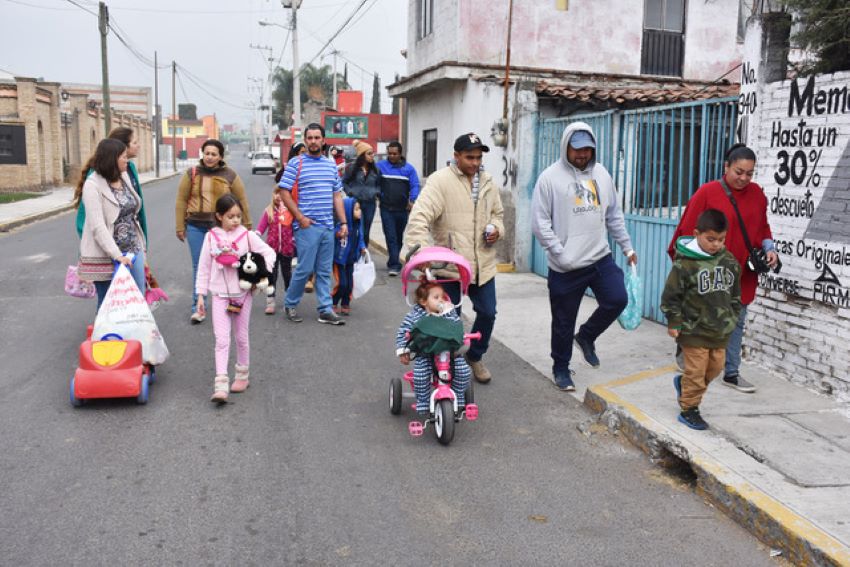It’s New Year’s Day in Chipilo, Puebla, and Luisa Merlo is stationed by her front door, boxes of treats on a table nearby.
“I have been here since 5:30 this morning,” she said, “and I will probably be here until 11.” While she speaks, children have been lining up in front of her home. On cue, they begin belting out a song.
When the singing finally dies down, she opens the door and hands out treats. The children hold their bags out in anticipation. She only has a moment’s rest before another group heads up her walkway.
They’re celebrating Cappo d’Anno, a New Year’s Day tradition brought over from Veneto, a region in northern Italy. Chipilo was settled in October 1882 by families from that region, and while Italians settled in many pueblos throughout Mexico, Chipilo is the only one to retain its Italian roots, traditions and language.
Although the Italian families arrived in the town in 1882, many traditions didn’t take root until much later.

“When [our ancestors] arrived in Mexico, they did not have money,” says Eduardo Piloni Stefanonni, the director of Chipilo’s Casa d’Italia. “They did not speak Spanish, and it took a long time to establish a community. There was only work … they did not have time for anything else.”
He figures people started celebrating Cappo d’Anno about 80 years after the first settlers arrived. The tradition seems a lot like a daytime version of Halloween, minus the costumes.
The words to the song they sing are in the Venetian dialect of their ancestors:
Bon di, bon dan Tell me a pleasant good morning.
Deme la bostra man Give me your hand.
Que estegue ben May you have a good year.
Tut al ano
Prima par el anema First in the soul
E dopo por al corpo And then in the body.
Den yure an bon capo de ano I wish you a good start to the year.
Que estegue ben May you have a good year
Tut al ano
Prima par al anema First in the soul
E dopo par al corpo And then in the body.
Luisa, like most chipileños, handed out candies but at least one person handed out peanuts.

“They are a more traditional treat,” Zuri Merlo explains.
Incidentally, a lot of people in the town are named Merlo, and during a chat on New Year’s Day, Zuri and Luisa discovered they were distantly related.
“I consider it important to maintain the traditions our ancestors taught us,” said Zuri as we walked through town. “It is the basic essence of the culture of our pueblo, and in them are reflected the beliefs, the food and our education. They are key points in maintaining a united community.”
When we arrived at her parents’ home, she reminisced about what Cappo d’Anno was like when she was a child.
“Something that I remember from when I was a little girl is my father’s excitement and devotion to this tradition,” she said. “He invested a lot of time and money, filling bags with different sweets. He said it was his obligation, that the children who came to his home gave him a blessing, and according to his beliefs, that determined if he would have a good year. And I’m so happy to see my own daughters having these experiences … in our beloved Chipilo.”
It’s understandable that the celebration has caught the attention of nearby pueblos.
“Years ago, it was only chipileños,” said Luisa. “Now, there are many people from outside.”
Zuri agreed, adding, “In fact, there are more adults and children from neighboring communities participating than those from our own pueblo.”
People from nearby towns don’t know the song, and they certainly don’t speak the dialect, but despite this, they still get the treats.
Joseph Sorrentino is a regular contributor to Mexico News Daily.
